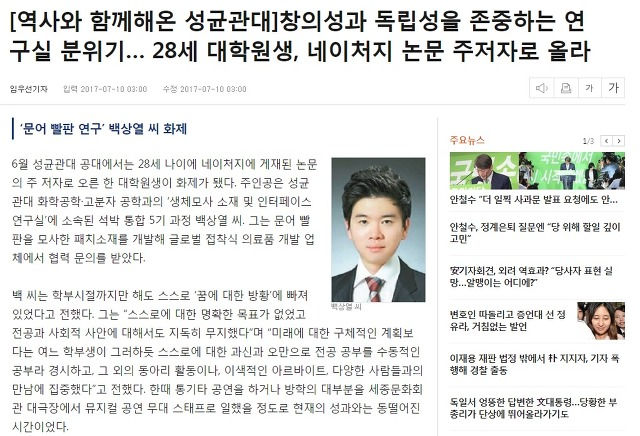
Bioinspired Geometry-Switchable Janus Nanofibers for Eye-Readable H₂Sensors (Adv. Funct. Mater. 29/2017)
A highly sensitive, eye-readable hydrogen sensor based on an arthropod-sensilla-inspired H2-reactive Janus nanofiber (H-NFs) array is presented by Changhyun Pang, Taeyoon Lee, and co-workers in article number 1701618. The H-NFs exhibit reversible structural deformations with fast response time (5.1 s), when exposed to flammable concentrations of hydrogen gas. The resulting change in optical transmittance is visually apparent without further instrumentation.
Link to journal article
Sensors: Bioinspired Geometry-Switchable Janus Nanofibers for Eye-Readable H2 Sensors: Heetak Han, Sangyul Baik, Borui Xu, Jungmok Seo, Sanggeun Lee, Sera Shin, Jaehong Lee, Ja Hoon Koo, Yongfeng Mei, Changhyun Pang*, Taeyoon Lee*
See the article: http://onlinelibrary.wiley.com/doi/10.1002/adfm.201770170/full


















